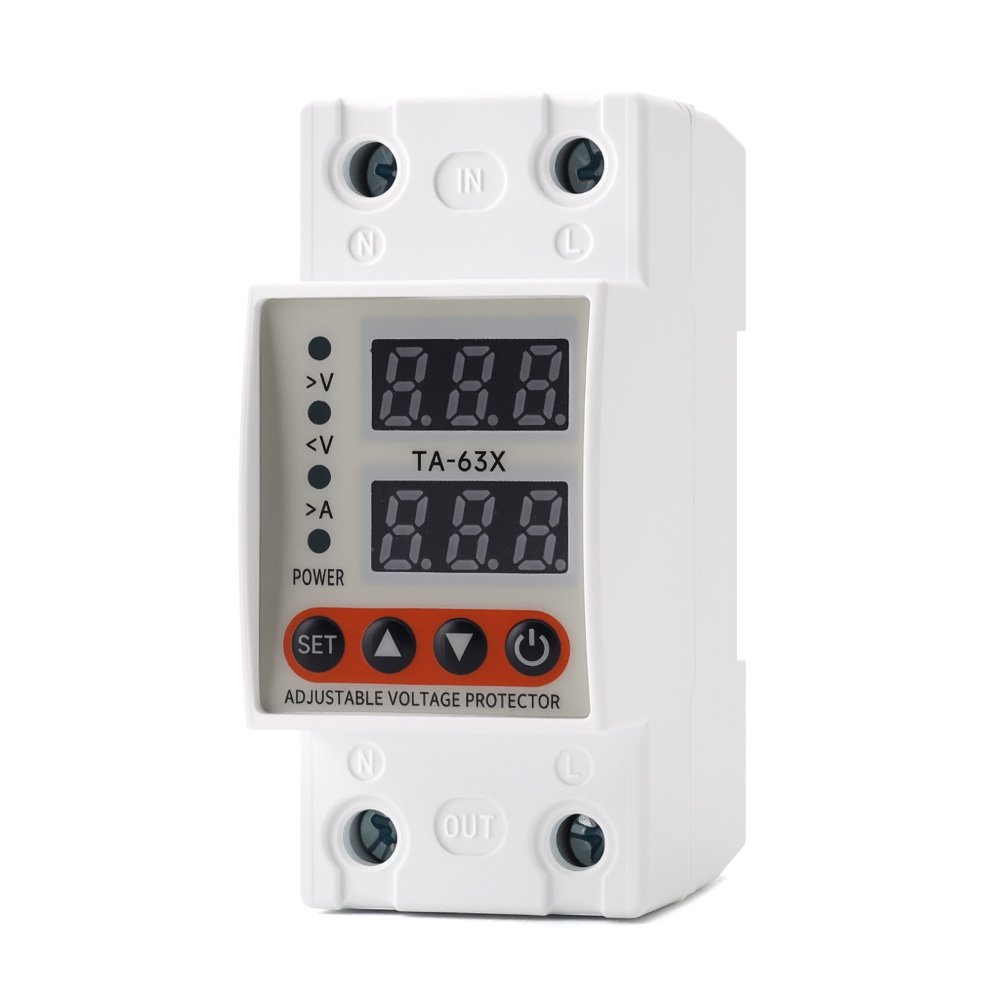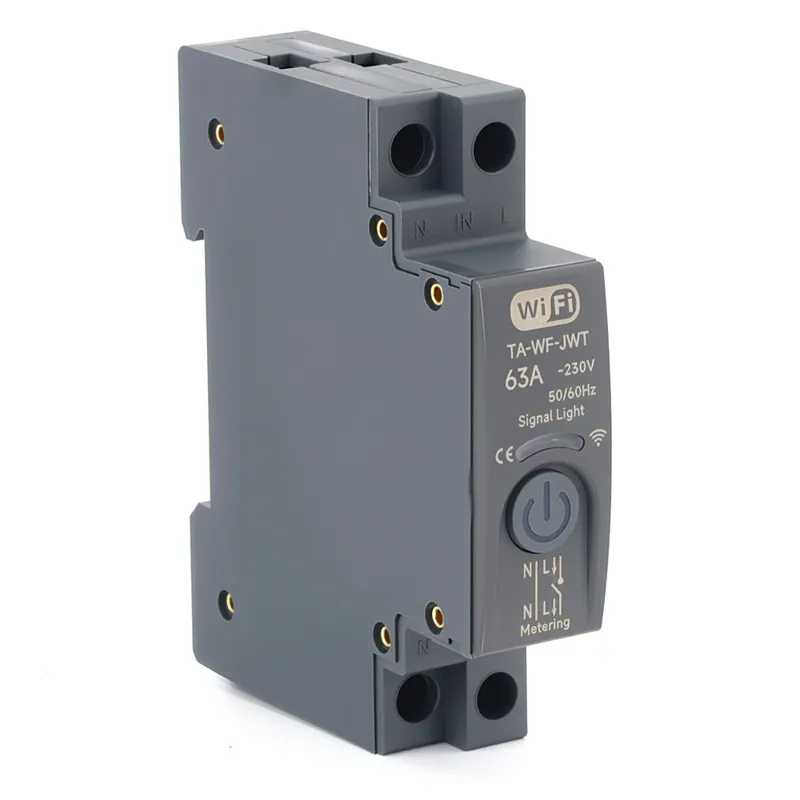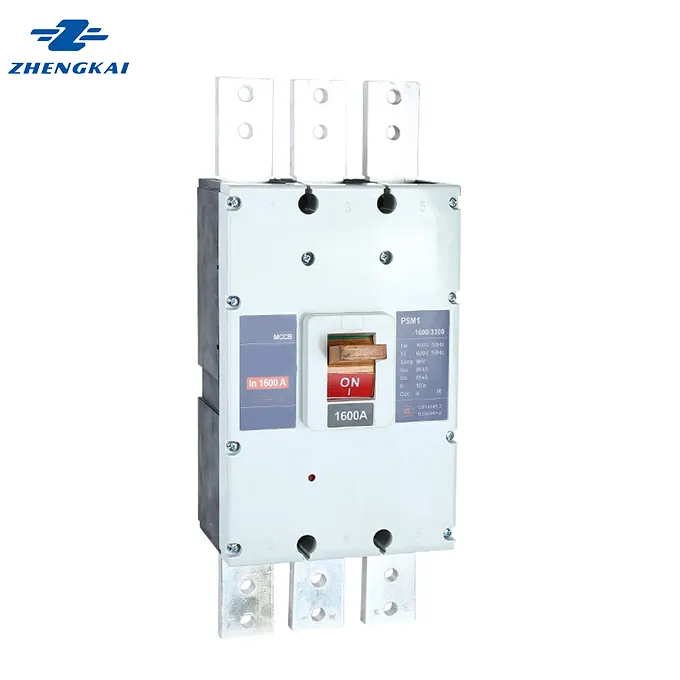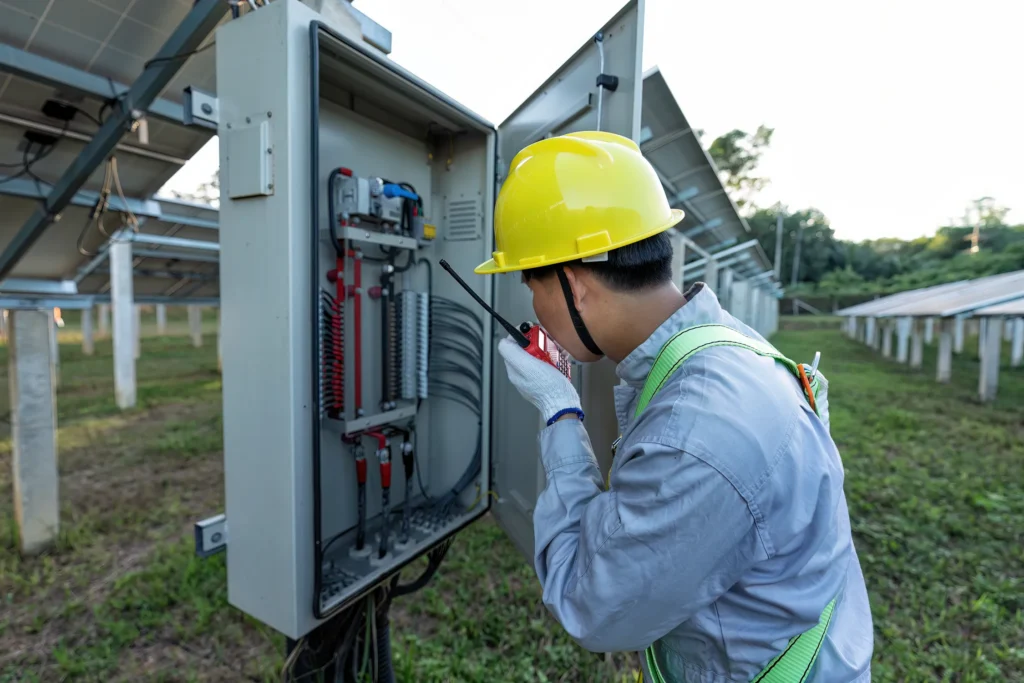Table of Contents
A smart circuit breaker is an electronic device that enables remote and intelligent control of an electrical circuit. These breakers can be managed via a mobile app, a web portal, or integrated with other smart home systems, making electrical system management and monitoring convenient and efficient.
This article examines a smart circuit breaker’s features, construction, and installation. For more details on how circuit breakers work and their types, see our circuit breaker overview article.
Smart Circuit Breaker Definition
Smart circuit breakers remotely manage their own status and the connected load. They operate using multiple communication protocols, including WIFI, 4G/5G, network ports, and Bluetooth.
These devices collect and monitor electrical system data from the circuit and its loads. Being internet-connected, they enable remote monitoring and control of load demands, temperature settings, and other essential system information.
Unlike traditional breakers, smart versions provide immediate data and remote control of protective actions.
Example
Imagine a smart circuit breaker connected to a refrigerator. If the refrigerator uses too much current due to a fault, the breaker senses the surge and trips, cutting power to prevent additional damage.
Simultaneously, it sends an alert to the user’s smartphone about the issue. The user can remotely switch the refrigerator back on or investigate the fault and decide whether to repair or replace it.
After resolving the problem, the user can reset the breaker from a smartphone or another device, restoring normal operation.
Features
Overload protection in a smart circuit breaker works like a traditional breaker when a circuit is overloaded or shorted. But added intelligence and connectivity boost energy efficiency, safety, and overall control and convenience for building management.
Efficient communication
Traditional breakers rely on simple mechanical switches. Smart breakers use advanced sensors, including current and temperature sensors, to monitor currents and detect faults. For example, if a circuit should draw 10A but fault causes 20A, a smart breaker can detect this immediately and cut power, while informing a central system such as a smart home hub. With algorithms and machine learning, these breakers can predict failures before they happen, enabling preventive maintenance and reducing downtime. They also use technologies like Wi-Fi and Bluetooth to communicate with devices and systems, including building management systems and the utility grid, enabling ultra-fast responses to faults.
Monitoring energy usage
Smart breakers measure electrical data with high precision, including usage, voltage, current, power, and frequency. Visualizing this data supports circuit-level metering and quality checks on the power grid. The platform stores regularly reported data, and an app lets users view hourly usage for the past week or daily usage for the past year. Users can see total instantaneous power and consumption history for the building or a specific circuit. Alerts can be configured to notify when an adjustable instantaneous power threshold is reached, a level of detail not available with traditional breakers.
Remote control and protection
The app allows you to open or close the smart breaker remotely, which is especially useful for devices located outside the building. This enables convenient management and monitoring from any location.
Choice of energizing circuits
Smart panels offer flexible circuit control beyond physical toggling. Users can manually switch circuits, schedule operations based on priority, and keep critical loads active. Critical systems like refrigeration or heating can be kept on, while non-critical circuits can be scheduled or deactivated as needed.
Alarms
The app supports alarm integration, enabling manufacturers to implement custom functions. If an issue arises, the breaker notifies the app, which can then trigger specific actions such as shutting down the affected circuit or resetting after a defined interval.


How does a smart circuit breaker work
The operation of a smart circuit breaker consists of two main parts: electromagnetic and electronic.
Electromagnetic
The electromagnetic portion mirrors that of a conventional circuit breaker. Overload protection functions the same way when a circuit is overloaded or experiences a short circuit fault.
Electronic part
The electronic section uses one or more circuit boards equipped with control and communication modules. The board receives instructions and data from a remote control source, such as a mobile app or computer program. The breakers gather and transmit the necessary data back to the remote interface. Users can monitor in real time, control remotely, adjust settings, schedule actions, and create plans using the available data. Unlike traditional breakers, a smart breaker enables remote control without on-site intervention.
Installation
The installation process for a smart circuit breaker follows the same steps as a conventional breaker, with the addition of configuring Wi‑Fi for remote control.
Connection steps
- Identify the input and output sides, including the phase and neutral terminals.
- Connect the input power lines to the circuit breaker, ideally within the distribution board for a home or domestic setup.
- Connect the output to the device the breaker protects, such as appliances or circuits.
Setup and pairing
- Install the companion smartphone app by following the QR code on the breaker or the manufacturer’s instructions.
- Enable Wi‑Fi on your smartphone and pair it with the breaker according to the app prompts.
- Use the app to monitor status, view diagnostics, and control the breaker remotely.
Operation and monitoring
- After powering up, the app displays the breaker’s status, including whether it is ON or TRIP.
- If a fault occurs and the breaker trips, the app will show a TRIP notification.
- Consult the user manual for detailed installation steps, safety precautions, and troubleshooting.
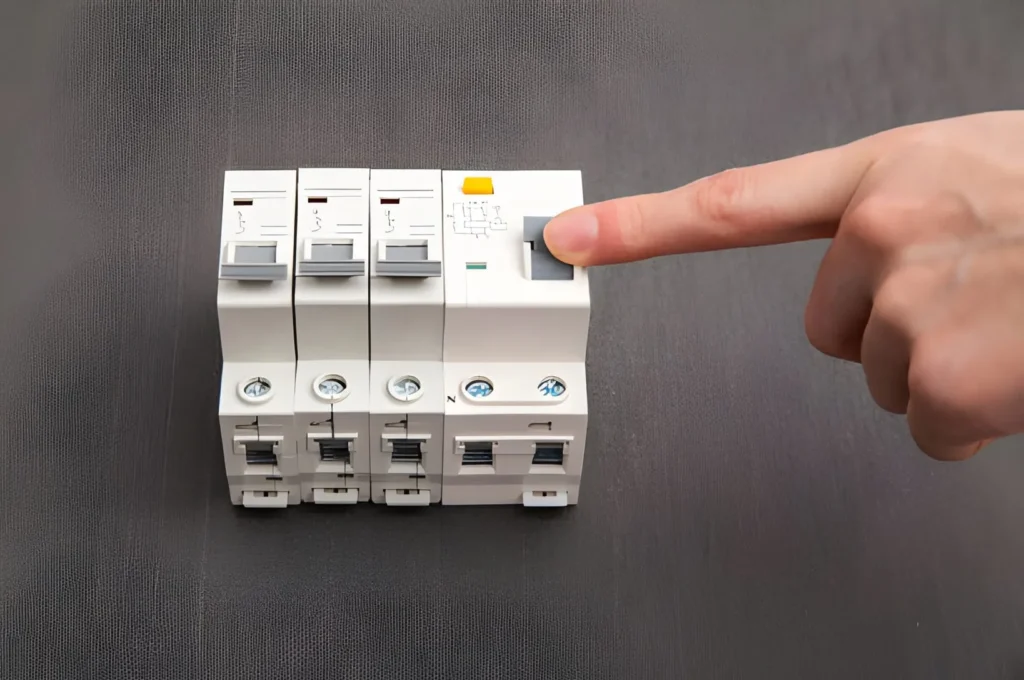

How to choose a suitable smart circuit breaker
When choosing a smart circuit breaker, several factors deserve careful consideration.
- Working voltage:The voltage range the breaker is designed to operate within. It can be suited for single-phase or three-phase systems.
- Current:The maximum current the device can handle without tripping. Choose a breaker rated for the expected load to prevent nuisance trips or equipment damage.
- Breaking power:The maximum current the breaker can interrupt without sustaining damage. This is critical for safety and to avoid arcing or fire risk during faults.
- Closing power:The maximum current the breaker can safely withstand when it is turned on or closed. This matters for high-current applications to prevent damage during start-up.
- Number of poles:The number of separate circuits the breaker can connect. Select the correct pole count for your system: single-pole for most single-phase setups, or three-pole for three-phase distributions.
- Communication protocol:The method used to connect and integrate the breaker with control systems. Options include Modbus, Profibus, Ethernet/IP, and other industrial or smart-home protocols. Ensure compatibility with your monitoring and automation framework.
Applications
- Residential and commercial buildings: Smart circuit breakers provide real-time data and insights into energy usage. They monitor and control energy use at the circuit level, offering detailed power consumption insights and enabling better energy management. They also enhance safety and reliability of electrical systems.
- Industrial settings: In industrial environments, smart circuit breakers monitor and control power at the circuit level, supporting improved energy management and equipment maintenance. They offer safety features such as fault detection, isolation, and rapid shut-off.
- Data centers: Smart circuit breakers offer real-time data and insights into power usage, helping data center managers optimize energy consumption and reduce costs, while improving electrical system safety and reliability.
- Renewable energy systems: These breakers monitor and control electricity flow to ensure efficient and safe operation. They balance loads and prevent overloading in systems with multiple sources, such as solar and wind.
- For more details on features of various circuit breaker types, read articles on miniature circuit breakers, residual current circuit breakers, and earth leakage circuit breakers.


Unlock the Benefits of a Smart Circuit Breaker
Discover how remote control, energy insights, and advanced protection can improve safety and efficiency. Access our quick guide to features, setup, and installation.
Frequently Asked Questions
What is a Smart Circuit Breaker and how does it differ from a traditional breaker?
A Smart Circuit Breaker adds connectivity and digital monitoring, enabling remote control, real-time data, and automated protection beyond the mechanical function of traditional breakers.
How can I install a Smart Circuit Breaker in my home?
Installation follows standard breaker practices, plus steps to connect via Wi‑Fi or a hub. Always follow the manufacturer’s instructions and consider professional installation for safety.
What benefits do Smart Circuit Breakers provide for energy management?
They measure and report usage by circuit, enable scheduling, and provide alerts for abnormal loads, helping reduce energy waste and prevent faults.
Can a Smart Circuit Breaker integrate with other smart home or building management systems?
Yes. They use common protocols and can interface with home hubs, BMS, and automation platforms for centralized control.
Do Smart Circuit Breakers require an internet connection to work?
Basic protection works without internet, but remote monitoring and control rely on an internet or local network connection.
How do I troubleshoot a Smart Circuit Breaker that won’t connect?
Check power to the breaker, verify Wi‑Fi or hub settings, ensure firmware is up to date, and consult the manual’s networking section. If needed, contact support.


